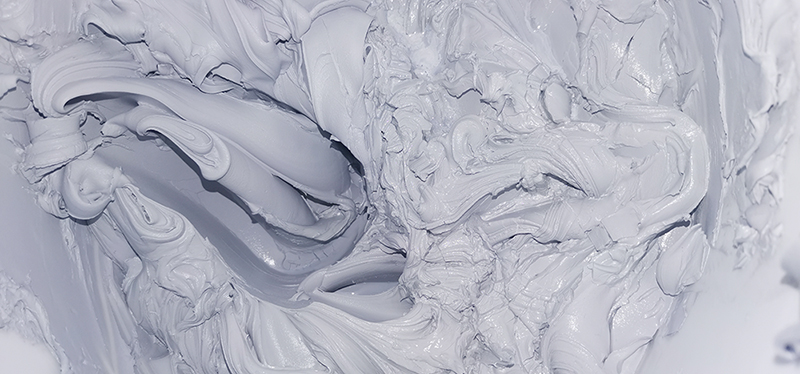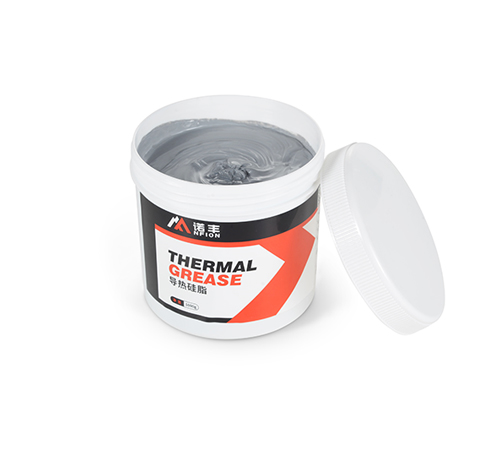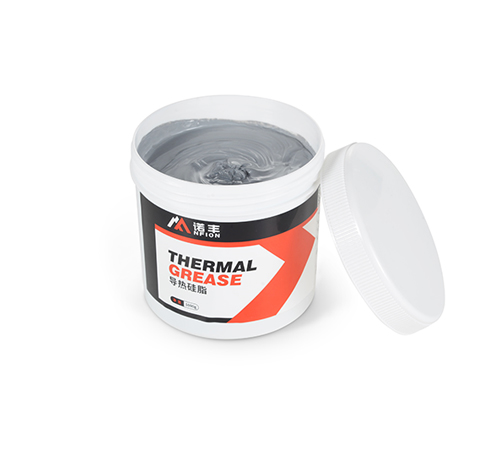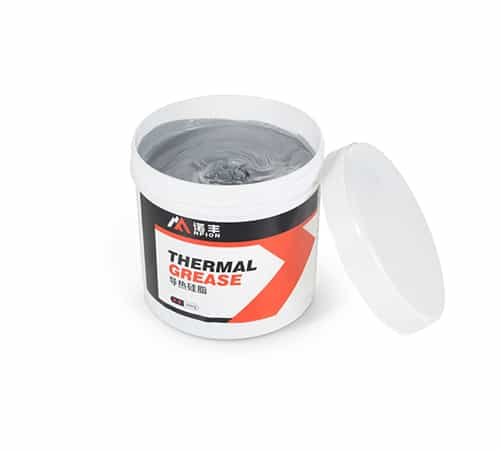Thermal Grease at 300℃: What You Need to Know
Author:NFION
Date:2025-04-07 14:19:40

When electronic devices operate under extreme conditions or industrial equipment faces high-temperature stress, a crucial material quietly plays the role of an “invisible guardian”—thermal grease. However, can this seemingly simple gray paste withstand the furnace-like temperatures of 300℃ and still perform its thermal management duties? This article will delve deep into this question, revealing the limits of thermal grease and potential solutions.
1. The Core Mission and Temperature Limits of Thermal Grease
The primary function of thermal grease is to optimize heat conduction between heat sources (such as CPUs or IGBT modules) and heat sinks by filling microscopic voids. Conventional thermal grease is typically silicon oil-based, with fillers like aluminum oxide or boron nitride. It maintains a stable thermal conductivity of 1.0–6.0 W/(m·K) within the temperature range of -50℃ to 200℃. However, for every 50℃ increase in temperature, the material undergoes irreversible "thermal aging": accelerated evaporation of silicon oil and sintering of filler particles, which increases thermal resistance by 30%-50%.
2. The Triple Challenges at the 300℃ Threshold
2.1 Molecular Chain Breakdown Crisis
When the temperature exceeds 250℃, the siloxane main chain begins to break, and the polymer matrix transitions from gel-like to liquid. This leads to “thermal delamination,” where the material loses its ability to maintain a stable interface, much like melted wax failing to stick to a wall.
2.2 Filler Failure Paradox
Aluminum oxide undergoes a crystal structure transition above 280℃, shifting from its regular hexagonal form to an amorphous state, causing its thermal conductivity to drop from 30 W/(m·K) to less than 15 W/(m·K). Some nano-fillers, due to their high surface activity, may aggregate at high temperatures, creating insulating “islands,” which degrade the thermal performance.
2.3 Oxidation Self-Catalytic Reaction
At temperatures around 300℃, oxygen in the air acts as a catalyst, initiating a chain oxidation reaction with methyl groups in the silicone oil. This reaction releases volatile silane gases, contaminating equipment and forming porous carbon structures at the interface, which leads to a dramatic increase in thermal resistance—up to 10 times.
3. Special Formulations to Overcome High-Temperature Challenges
To cope with extreme high-temperature environments, material engineers have developed several special formulations to extend the operational temperature limits of thermal grease.
1. Ceramic-based Thermal Grease: By incorporating silicon carbide whiskers to form a three-dimensional heat transfer network, these greases can maintain thermal conductivity decay of less than 8% after 48 hours at 320℃, making them suitable for high-temperature industrial equipment.
2. Fluorosilicone System: These thermal greases can withstand temperatures up to 350℃ but come at a cost—20 times higher than conventional products. This formulation is typically used in aerospace and other extreme fields.
3. Phase Change Composites: These materials undergo a solid-to-liquid phase change at around 280℃. This phase change helps adapt the interface and extends the service life by up to 3 times.
4. Survival Strategies in Practical Applications
In certain high-temperature scenarios, a single type of thermal grease is often insufficient to meet the heat dissipation needs. Engineers have adopted a “gradient heat dissipation” strategy, utilizing a combination of different thermal materials and heat dissipation systems to ensure that devices maintain effective heat management across various temperature ranges.
● Low-Temperature Zone (<150℃): Use conventional thermal grease to meet standard heat dissipation requirements.
● Medium-Temperature Zone (150-250℃): Use ceramic-based thermal greases or other high-performance formulations for better thermal conductivity.
● High-Temperature Zone (>250℃): Switch to liquid metal thermal pads for superior heat dissipation.
This multi-layered thermal protection system, combined with forced air cooling or heat pipe systems, effectively reduces device temperatures and prevents overheating. In tests conducted by a photovoltaic company, this combined strategy reduced IGBT junction temperatures by 42℃, and device failure rates dropped by 67%.
5. Conclusion: Can Thermal Grease Survive 300℃? The Right Solutions for High-Temperature Challenges
Can thermal grease withstand 300℃? The answer is not absolute. While conventional thermal greases cannot maintain stable performance at 300℃, special formulations such as ceramic-based greases and fluorosilicone systems can meet high-temperature challenges. However, the true solution lies not in seeking an all-purpose material but in selecting the right material and cooling strategy based on specific application scenarios and temperature requirements.
By accurately controlling the boundary conditions of heat management systems and intelligently combining different types of thermal materials, engineers can significantly improve heat dissipation efficiency and device stability in high-temperature environments.
 CN >
CN >



